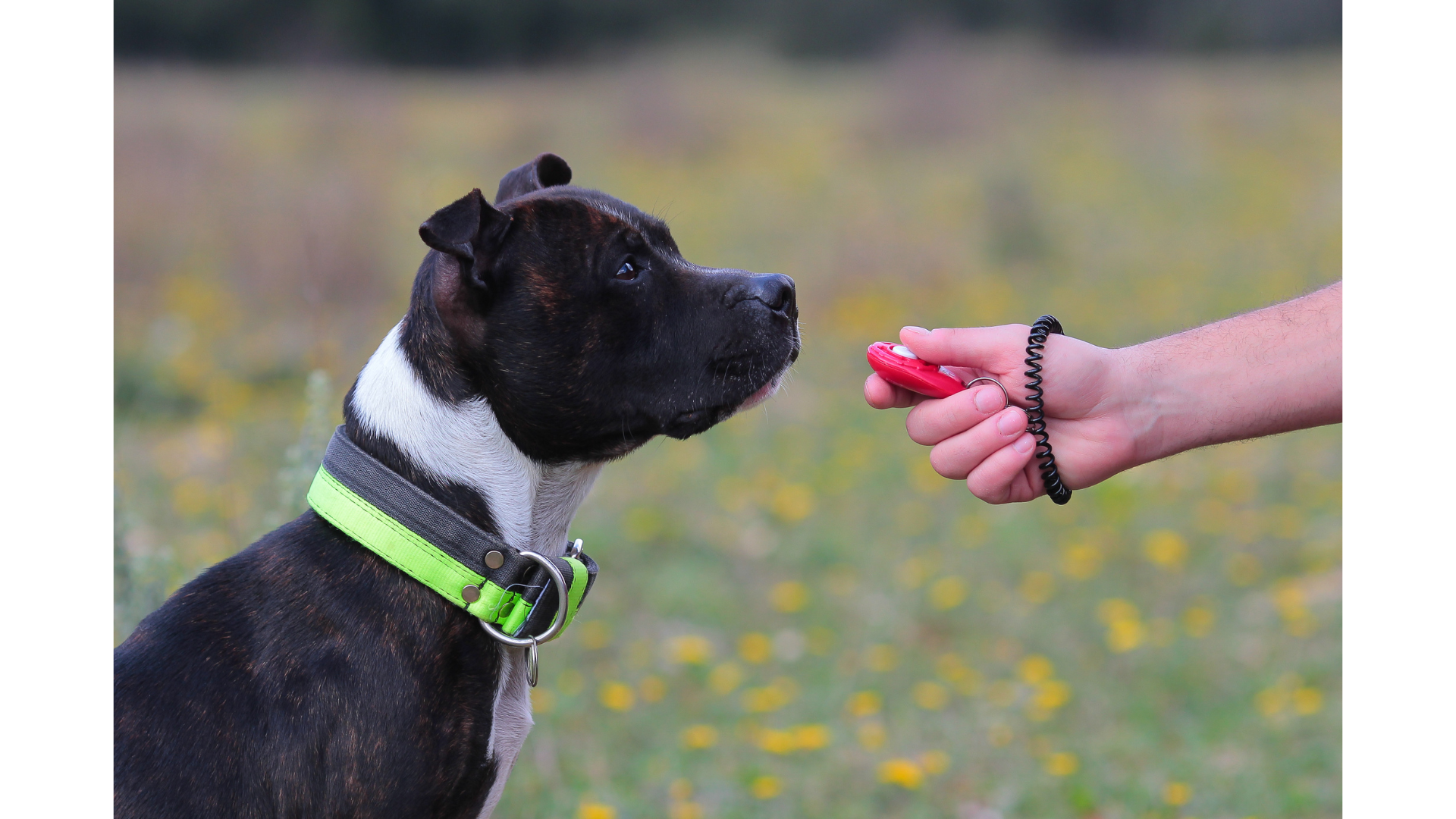3 Things You Need to Know About Clicker Training
If you have been reading up on different dog training methods, you may have seen articles about "clicker training." Clicker training may seem complicated at first, but once you get into the groove of using a clicker, it will become second nature.
If you are a dog parent who wants to try clicker training with your dog, there are three main things you need to know. For your dog training to be as successful as possible, keep reading to learn what they are!
#1: The "click" tells your dog that they've done something correctly.
More precisely, the click "marks" the behavior you will reinforce (most likely with a treat.) This is part of what makes clicker training so effective.
Let's say I am trying to teach my dog to lay down. When she does the behavior, I want to tell her: "Hey, I like that you are right next to me! You get a treat for that." But since dogs don't understand complex sentences, I can't say that! So instead, we can use a clicker to communicate that info to our dogs. In this example, I would "click" exactly when she lays down, then give her a treat. This tells her that laying down earns her reinforcement, and she is more likely to lay down again.
Here are some more examples of things that you can click and treat your dog for in daily life:
Standing by your side
Looking in your direction
Coming when they hear their name
Chewing on a toy instead of the couch
Looking at a distraction without pulling on leash or barking
And so much more! You can click and treat for any behavior you want your dog to do more often
#2: Your clicker is not a remote that "makes" your dog do something.
Remember from above: we click when we want to tell our dogs that we like what they've done. We never click to get our dog's attention or call them to us.
A byproduct of the "click" sound might be that your dog looks at you in anticipation of the treat. This is a great sign that your dog has a positive association with the clicker. However, the function of the clicker is not to make your dog look at you.
Here's an example of incorrectly using your clicker like a remote: I have seen confused students click when their dog is doing something undesirable - like barking or jumping up. These people are misguidedly clicking to get their dog to come to them and stop doing the unwanted behavior. This is very confusing for your dog and will make the clicker meaningless.
So remember: the click means "Yes, I like that you did that! You get a treat for that."
#3: You must always give your dog a treat after you click.
We've arrived at our final big clicker training tip! This one is simpler: if you click your clicker, you must give your dog a treat.
Yes. You must. Every single time you click, you treat. This will ensure that the clicker continues to hold meaning for your dog. If you click often, but don't always give your dog a treat for their behavior, they will become confused and the clicker will lose its teaching power.
I think about it like this: Let's say a friend is always telling you they will get coffee with you, but they only show up about 50% of the time. Tomorrow, if your friend says that they'll meet you at the cafe, will you believe them? Personally, I would stop giving their promises less value! That can happen with the clicker if we don't give treats every time.
This does not mean that you have to give your dog a click and a treat every second of every day. My tip is simply that if you can't give your dog a treat, don't click in that moment.
So that's it! Those are the three biggest concepts I think you need to know about using a clicker with your dog.
It's hard to summarize clicker training in a short blog post - trainers have written whole courses about the method, after all!
If you want to learn how to use clicker training to approach your dog's behavior problems, reach out! I'd be happy to discuss scheduling a training consultation to help out.


